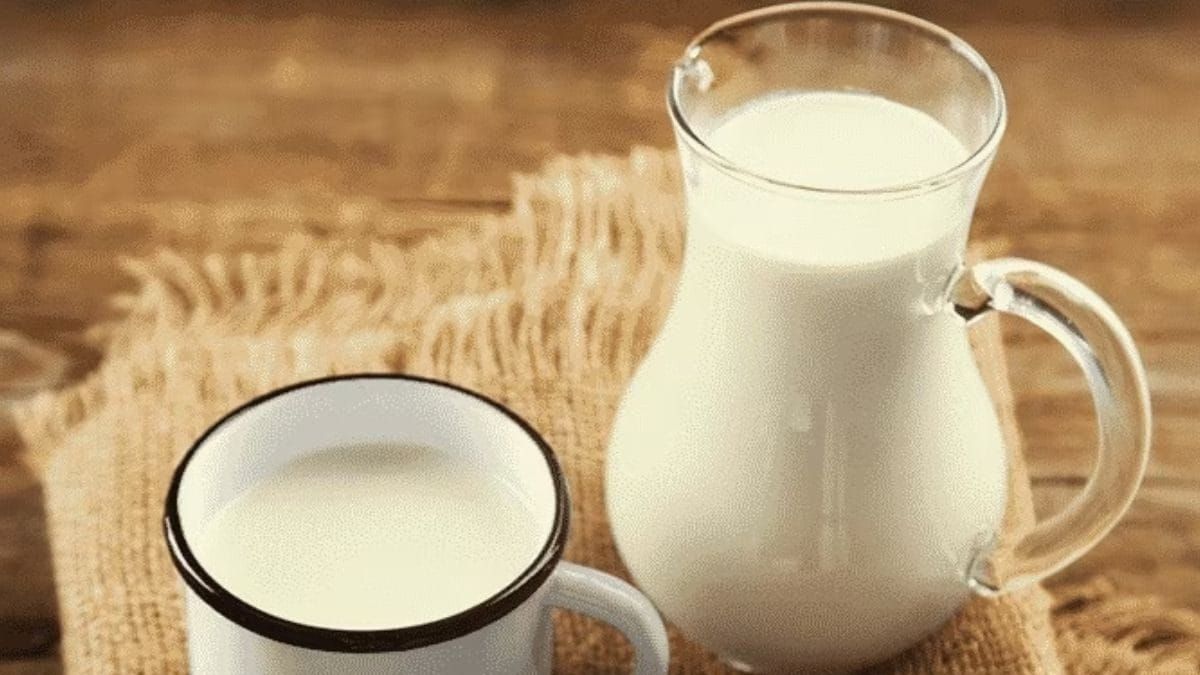You should check labels to make sure you are not buying milk with chemicals or unwanted preservation methods, so you only drink pure, natural milk.
Decoding milk labels may seem complicated, but with a little knowledge, you can make informed decisions that will benefit your health.
Navigating dairy products can be confusing due to the large number of milk types on display. Although milk is a common food with good levels of calcium and vitamins, not all milk is created equal. Many products contain preservatives and additives that can affect your health. Therefore, it is important to read the labels before making your purchase.
“In today's dairy landscape, understanding milk labels goes beyond simply selecting between skim, 2% or whole. It's all about deciphering the often overlooked additives and preservatives that may be hiding inside your box. Normal milk, coming from various homes and collection centers, usually goes through multi-level processing, which compromises its freshness and purity. When it comes to detecting additives and preservatives in milk, several key tips can help consumers choose. Beware of unknown ingredients such as carrageenan, artificial flavors, potassium sorbate, or sodium benzoate, which often indicate the presence of additives. Also, consider the shelf life of the milk; Longer durations may indicate the use of preservatives, while truly fresh milk sours naturally within a few days. Lastly, trust your senses; Fresh milk gives off a pleasant, slightly sweet aroma, while any chemical smell or unusual density may indicate the presence of additives,” said Varun Khurana, CEO and Founder, Otipy.
The importance of reading milk labels
Milk is a household item in many families because it contains calcium, vitamin D and protein, which are beneficial for our body. However, not all milk is created equal. Some brands add ingredients that undermine their health benefits. You should check labels to make sure you are not buying milk with chemicals or unwanted preservation methods, so you only drink pure, natural milk.
Common additives and preservatives to consider:
Artificial flavors and sweeteners:
- Why are they added?To enhance flavor, especially in flavored dairy products.
- Why avoid itArtificial sweeteners such as aspartame and high-fructose corn syrup can lead to obesity, diabetes, and metabolic syndrome.
- How to detectLook for ingredients like sucralose, saccharin, aspartame, and high fructose corn syrup.
Thickeners and Stabilizers:
- Why are they added?To improve texture and shelf life.
- Why avoid itCommon thickeners like carrageenan can cause digestive problems and inflammation.
- How to detectIngredients such as carrageenan, guar gum, and xanthan gum are often listed on the label. Aman J Jain, CEO and Co-Founder, Doodhvale, highlighted, “People often ask me about the 'hidden' ingredients in milk and how to spot them. Given the enormous variety of products on supermarket shelves, it is important to know what you are actually putting in the glass. So, let's talk a little about milk labels and how to recognize dangerous additives to choose the healthiest one for you and your family.
preservatives
- Why are they added?To increase shelf life and prevent spoilage.
- Why avoid itPreservatives such as sodium benzoate or potassium sorbate can cause allergies or other health problems.
- How to detectLook for chemical names such as sodium benzoate, potassium sorbate, and hydrogen peroxide. There are DIY test kits available to help you perform rapid tests at home.
Synthetic vitamins and minerals
- Why are they added?Boost the nutritional value of milk, especially in low-fat or dairy-free products, or artificially generate synthetic products.
- Why avoid itWhile the fortification itself is not harmful, synthetic additives sometimes cause imbalances or allergic reactions. Some unclassified products can also have serious health consequences.
- How to detectCheck the ingredients list carefully. Naturally available nutrients are not listed in the ingredients, while artificially added minerals or fortification should be included.
Common synthetic vitamins and minerals include vitamin A palmitate, vitamin D2 or D3 (cholecalciferol), calcium carbonate or calcium citrate, and folic acid. You can also examine the nutritional information for non-standardized values.
Tips for choosing the healthiest milk
Go organic
Organic milk tends to be free of preservatives and harmful chemicals. It also has no antibiotics or artificial hormones.
Look for natural or farm-to-home products
Single-origin milk or milk directly traceable to the farm is generally better. It has lower chances of adulteration in the supply chain.
Find authentic lab test reports
Some companies have established modern laboratories and conduct extensive testing of milk for adulterants and impurities. Request laboratory test reports for products.
Choose milk that suits your family's needs
Depending on dietary limitations, choose the milk that best suits your family. Multiple types of milk include cow or buffalo milk, whole or low fat milk, etc.
Be curious, be smart
Natural is not always synonymous with health. Likewise, not all packaged products are always healthy. Even if the packaging says it's natural, always examine the ingredient list, check the source, and check reviews before making a purchasing decision.
Decoding milk labels may seem complicated, but with a little knowledge, you can make informed decisions that will benefit your health. By avoiding harmful additives and preservatives, you ensure the purest, most nutritious milk for you and your family. Remember, the best milk is usually the simplest: free of unnecessary additives but rich in natural goodness. Stay well informed when making decisions about what you eat to maintain your health.












